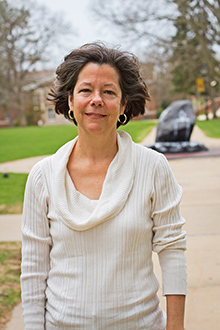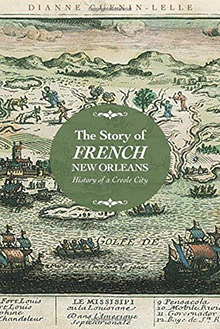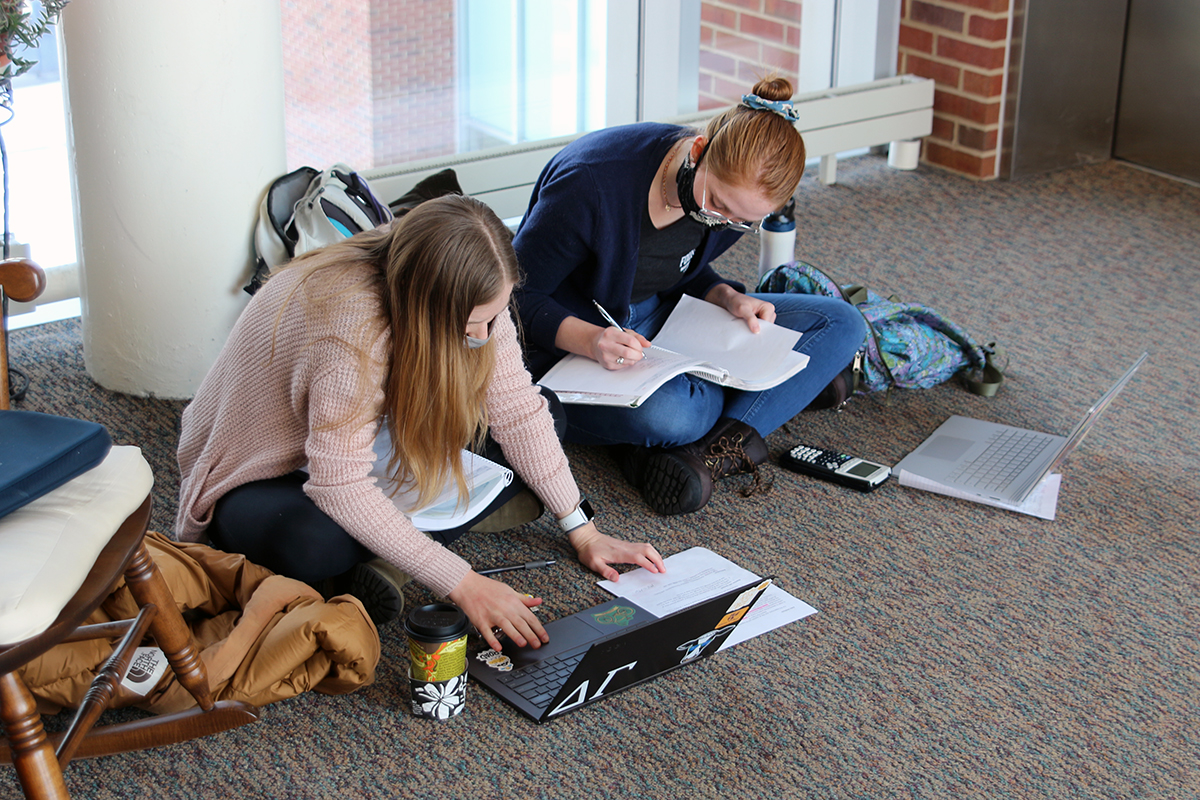Guenin-Lelle’s Historical Study of New Orleans Is All Relative
Related Programs
Related Posts
Connect With Us
In researching her latest book, the Albion French professor unexpectedly came across an ancestral link to the city's earliest days
August 11, 2016
By Chuck Carlson

Dianne Guenin-Lelle, professor of French, began teaching at Albion College in 1987. She received her B.A. from the University of New Orleans, her M.A. from the University of Southwestern Louisiana and her Ph.D. from Louisiana State University.
The words took Dianne Guenin-Lelle back to another time and place.
For the Albion College French professor and New Orleans native, reading the surprising 300-year-old words of Gerard Pellerin was exhilarating enough. Realizing they were words spoken (translated below) by a long-ago relative allowed her to realize that this was history in its purest form.
Dear Sir and Dear Cousin,
I arrived in Louisiana on March 15, 1719 in good health; from the desire you expressed in the letter that you honored me by writing, I am composing the following accurate and exact travel narrative for you, from what I have seen and observed myself through my own experience.
Dauphin Island is the first of all the islands. We spent about two weeks there, the only aspect of this island was that it was an infectious sinkhole populated by pit worms. It does not give a great impression of this country. The port itself is in the harbor that changes from one moment to the next due to the moving sands that follow the impressions made by the currents. Because of the winds and storms, several people easily become disgusted either from rotting too much on this island or for not having the heart to move onward by the two principal rivers that make up this vast colony; one is the Mobile River and the other is the Mississippi River that the savages call Barbanca. Others call it the Missoury, which is a beautiful and agreeable river that flows to the west of Mexico and discharges in the Mississippi.
These were the opening lines of a journal written by Pellerin in August 1720, a native of France who had decided to come to America to seek a new adventure, maybe a little fortune and, perhaps, to find some solace.
When Pellerin came, New Orleans was a brand new community in an America that was still the object of a provincial tug of war between the European powers of Great Britain, France and Spain.
But it would not become the city it would be for decades. When Pellerin and his band of 10 settlers landed in the area, there was no talk of an American revolution, or something called a Louisiana Purchase.
At this point, New Orleans featured little more than three homes and a company store that sold goods everyone in the region would need. It was a blank slate ready to be filled in, and Pellerin was one of the first to see it.
The journal Guenin-Lelle uncovered, almost by accident, was the first evidence of a colonial America quite unlike anything most Americans have come to know.
“It’s the earliest known manuscript of someone coming to Louisiana intent on staying in Louisiana,” Guenin-Lelle said.
More to the point, Pellerin was a direct ancestor that she only learned about in 2010 when she was able to read his words during a stop at the Bibliotheque de l’Arsenal in Paris.
“I’m looking at history,” she said, referring to Pellerin’s descriptive essay, “and he’s looking back.”
The long and well-known voyages that I have made by sea have made me think differently from other concessionaires who, since they are tied to the company and need to be within reach of the easy supplies that they receive from the ships, do not want or do not seem to want to leave this island. On the contrary, I ardently requested for them to provide me with the means to push forward. Otherwise I would be consumed like the others are. Or I would have made a decision when there would not have been enough time left. Ultimately I remembered that I had not come to Louisiana to fight the sand, but to work on a settlement equal to my strength.

The history of New Orleans, where Guenin-Lelle was born and raised and lived for the better part of 30 years, has long fascinated her. Indeed, she recently wrote a book, The Story of French New Orleans: History of a Creole City, that was published last winter and describes the fractious, diverse, unusual history of the city and how, in many ways, it is so different from most other American cities.
“With New Orleans, there’s never a simple answer,” she said. “Ever.”
In fact, New Orleans wasn’t even founded by the French, but by a Canadian, Jean-Baptiste Le Moyne de Bienville, whose family not only founded that city, but Biloxi, Miss., and Mobile, Ala., as well as being named the first governor of Louisiana in 1701.
Over the next century, Louisiana would be owned by France and Spain and then go back to France briefly before Napoleon Bonaparte in 1803 sold the land holdings to the fledgling United States, essentially doubling the size of the young nation.
And while most Americans believe New Orleans was, and still is, French to its core, in truth Guenin-Lelle said New Orleans hasn’t been French since 1762. In fact, asked if anything surprised her in her research of early New Orleans, she laughed.
“Yeah, it’s Canadian,” she said.
Still, Guenin-Lelle has watched it all in fascination. She has made frequent trips to France to study and in May returned from a three-month Resident Scholar program at the Institut Américain Universitaire in Aix-en-Provence, where she continued her research on France’s influence in colonial Louisiana history.
It was on one of those many visits that she came across Pellerin’s actual manuscript, sending her research in a new and unexpected direction.
She translated the work and Pellerin’s words helped reveal more to her about an era, and an area, in colonial America few people tend to think about. After all, when he arrived there, the city was just a year old.
“It just kept coming back to Pellerin,” she said. “I’m fascinated as a scholar by his life.”
Pellerin remained in the region and would go on to help establish the town of Natchez, Miss. Later he would become a farmer and run the company store. His first wife, Angelique, died soon after they reached Natchez, and he went on to marry Françoise. It is through that marriage, over seven generations, in which Guenin-Lelle is linked to Pellerin. He died in 1737, at age 55, in New Orleans.
One can make a big fire and have abundant hunting. So, here is the advice that I have the honor of giving to a friend who is about to leave to take a concession in Louisiana. To get, if he can, from the company permission to board the member of a double dinghy that only has to be reassembled and to load the wood that is not missing in Louisiana. But good carpenters are rare here. The few that are here are all busy and are at different habitations spread over different areas.
Guenin-Lelle’s odyssey of discovery continues.
She is currently working with a group in Albion on a yearlong 20th anniversary celebration of the community’s Sister City relationship with Noisy-le-Roi and Bailly, France. A French Sister City delegation will be in Albion in mid-September to celebrate both that milestone as well as the City of Albion’s 50th Festival of the Forks on September 15-17. And Guenin-Lelle will teach a First-Year Seminar this fall called Cultures, Connections and Communities from Albion to France—and Back.
Always close by will be the image of Gerard Pellerin, a part of her past that she hopes can be a part of her future as well.
“He remains fascinating to me,” she said.
